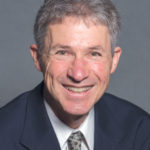
It is increasingly recognized that changes in chondrocyte phenotypes play an active role in the response of cartilage to injury and in the pathogenesis of osteoarthritis (OA). The symposium Chondrocytes: To Live or Let Die? on Sunday will examine the role of chondrocytes in cartilage damage and new paths toward therapeutic strategies.
Matthew Warman, MD, Harriet M. Peabody Professor of Orthopaedic Surgery and Genetics at Harvard Medical School in Boston, will discuss the role of superficial zone chondrocytes in cartilage integrity during the session, which will take place from 4:30 – 6:00 pm in Room 23 A.
“In our research, we have been addressing the question as to whether living cells in cartilage are necessary to maintain it,” Dr. Warman said. “In healthy young mice, we’ve been able to kill 80 percent of the cartilage cells, and the cartilage looks fine a year later, suggesting that once you make your cartilage, it takes a long time for it to wear out on its own.”
Dr. Warman and his colleagues repeated the experiment, adding a joint injury to the equation. They found that animals with a joint injury in the absence of living cells seemed to do better than animals that had a joint injury with their chondrocytes still alive.
“We interpreted that to mean that living cells, in the context of trauma, do something in response to an insult that is more deleterious to cartilage than if the cells had done nothing at all,” he said. “It’s possible chondrocytes in an injured joint initially soften cartilage to a point that these chondrocytes now experience friction and deformation that becomes capable of killing them and wearing down the cartilage matrix.”
Because humans live much longer than mice, extrapolating potential therapeutic implications for humans from these experiments would require additional study, Dr. Warman said.
“Mice only live a couple of years and perhaps don’t need living chondrocytes after their cartilage has formed, because the cartilage they’ve made is good enough to last their lifetime,” he said. “Humans, who expect to live many decades longer than mice, may need living chondrocytes to keep cartilage healthy and intact for the long haul.”
In the context of an injury, however, Dr. Warman said that finding a way to temporarily “paralyze” or deactivate the cells might protect the cartilage from the initial degradative changes that active living cells might cause. To that end, he said his research group is attempting to determine the mechanism at work in the living cells that are affecting the damaged cartilage.
Martin Lotz, MD, Professor and Head of Arthritis Research at the Scripps Research Institute in La Jolla, CA, will follow Dr. Warman with a discussion on the relationship of autophagy defects and apoptosis to cartilage damage in aging and osteoarthritis.
“We’ve recognized for some time now that chondrocyte death is an important part of cartilage destruction in osteoarthritis, and this has motivated other studies to try to understand why chondrocytes die in osteoarthritis and whether we can actually do something about it,” Dr. Lotz said.
In OA, apoptosis is an important mechanism leading to cell death, Dr. Lotz said, and is fairly well understood in terms of the molecules that lead to the activation and execution of the apoptosis program.
“A class of enzymes, called caspases, are responsible for the execution of the apoptosis program and small molecule inhibitors of caspases can prevent apoptotic cell death,” he said. “We showed that caspase inhibitors were effective in reducing the severity of experimental osteoarthritis in rabbits and also the damage caused by acute mechanical injury to cartilage tissues in vitro.”
Further studies addressed mechanisms that lead to apoptotic cell death in osteoarthritic cartilage and focused on cellular homeostasis mechanisms, such as autophagy.
“In the normal process of autophagy, damaged organelles and macromolecules trigger the selective removal of the damaged molecules or organelles, which are recycled for new protein synthesis. In osteoarthritis, some of the main molecules that activate and mediate autophagy are reduced in their expression, resulting in dysfunctional autophagy,” Dr. Lotz said. “As a consequence, the renewal process of the cell doesn’t function and so, as the cells accumulate more damaged molecules, including more damaged mitochondria, they trigger cell death. Pharmacological activation of autophagy reduced the severity of experimental osteoarthritis and this was associated with an increase in cartilage cellularity.”
Ongoing studies, he said, are further exploring potential interventions to prevent apoptosis and/or enhance autophagy to protect against cartilage structural damage in both post-traumatic and age-related OA.
Also during this symposium, Robert Mauck, PhD, will describe the differences in chondrogenic phenotype, microenvironment and matrix assembly at the single-cell level. Dr. Mauck is the Mary Black Ralston Professor of Orthopaedic Surgery and Professor of Bioengineering at the University of Pennsylvania in Philadelphia.


